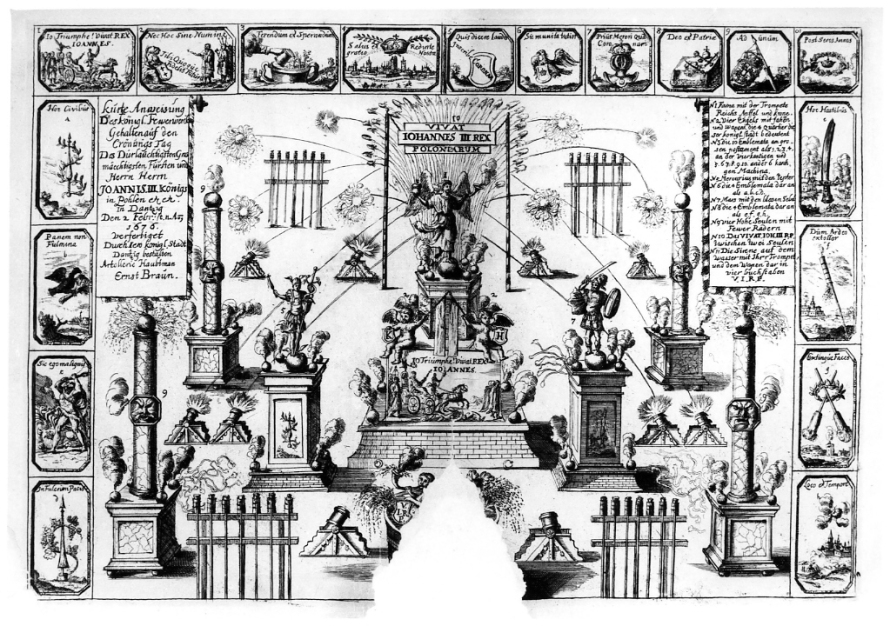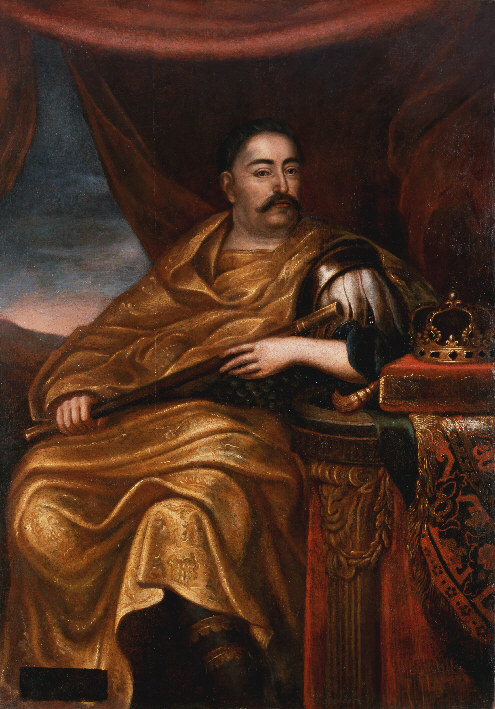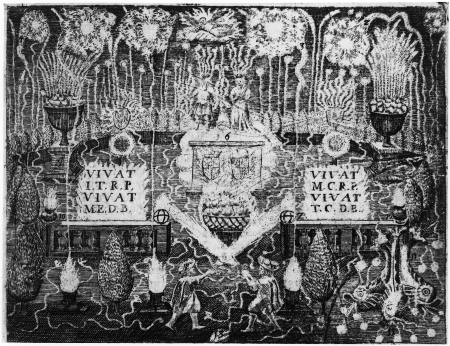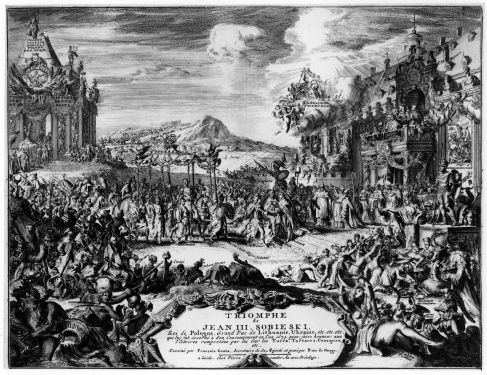Fireworks in Gdańsk at the coronation of Jan III Sobieski
Gdańsk was always quick to react to significant events related to Jan Sobieski. Such was the case with the coronation of Jan III and Marie Casimire. The climax of the ceremony held in Gdańsk was a firework display on 2 February 1676 commissioned by the city and staged by Ernest Braun, captain of the local artillery and amateur engraver (the dates of his birth and death remain unknown). In fact, he might have been a son of the engraver surnamed Braun who produced views of Gdańsk in cooperation with Bensheimer. Undoubtedly, he specialized in artillery matters and in staging the entire program of firework display that constituted a standard repertoire of baroque formal celebrations (as testified by two of Braun’s publications from the 1680s, for which he also executed some etched illustrations). The discussed print (etching with copperplate) is an inconsistent composition, disintegrated to a number of elements explained by a legend. The centre is occupied by a statue of a winged Pheme blowing the trumpet, holding an orb and a crown. The allegorically proclaimed glory of the name and triumph of Jan III is expressed by means of numerous emblematic decorations of the base as well as verbal and pictorial compositions of the pedestal. The corners of the base are decorated with four angels holding standards and emblems of the main Gdańsk districts.
The apotheosis of the Polish monarch is further emphasised by a banner stretched between the masts with the following inscription: Vivat Johannes III Rex Poloniarum. The firework machine is set up of randomly distributed columns with tourbillions and flare pistols for launching skyrockets. It is impossible to determine whether Braun executed the etching personally (it represents a far better artistic quality than book illustrations bearing his name). Nevertheless, the print’s connection with the discussed inhabitant of Gdańsk remains unquestionable. It is also unclear if the etching constituted from the beginning a loose chart or if it was originally included in a book publication.
Ernest Braun (?), based on his own concept and drawing (?): Fireworks in Gdańsk at the coronation of Jan III Sobieski, etching with copperplate, after 2 February 1676.



